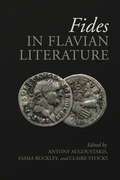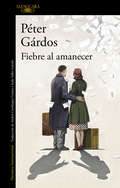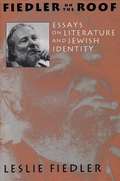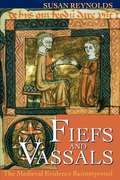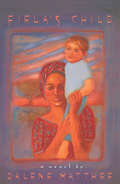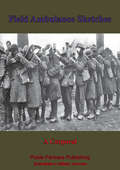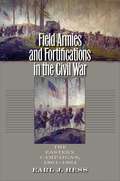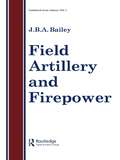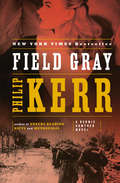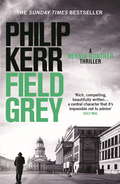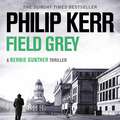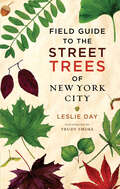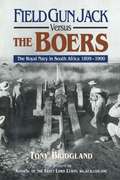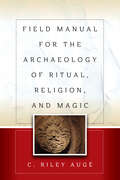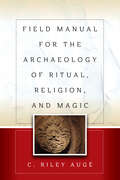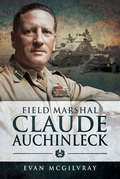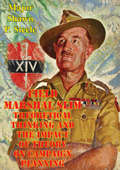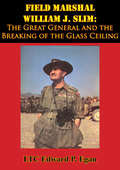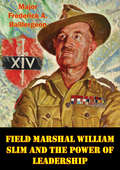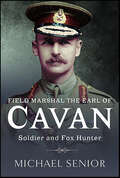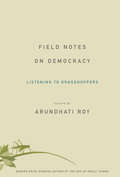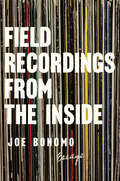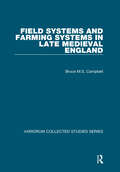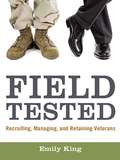- Table View
- List View
Fides in Flavian Literature (Phoenix Supplementary Volumes #56)
Fides in Flavian Literature explores the ideology of "good faith" (fides) during the time of the emperors Vespasian, Titus, and Domitian (69–96 CE), the new imperial dynasty that gained power in the wake of the civil wars of the period. The contributors to this volume consider the significance and semantic range of this Roman value in works that deal in myth, contemporary poetry, and history in both prose and verse. Though it does not claim to offer the comprehensive "last word" on fides in Flavian Rome, the book aims to show that fides in this period was subjected to a particularly striking and special brand of contestation and reconceptualization, used to interrogate the broad cultural changes and anxieties of the Flavian period as well as connect to a republican and imperial past. The editors argue that fides was both a vehicle for reconciliation and a means to test the nature of "good faith" in the wake of a devastating and divisive period in Roman history.
Fiebre al amanecer
by Péter GárdosLa novela romántica del nuevo siglo es una historia real.Un Romeo y Julieta después del Holocausto. «En este inolvidable libro el Holocausto es tan solo el telón de fondo de la más insólita de las historias de amor. Fiebre al amanecer posee la virtud del romanticismo clásico: resultar atemporal. La apasionante novela de Gárdos va a ser un éxito.»The Australian Julio de 1945. Miklós, un superviviente húngaro de Belsen, llega a un campamento de enfermos en Suecia. Aquejado de tuberculosis pulmonar, los médicos aseguran que le quedan pocos meses de vida. Pero él tiene otros planes: confecciona una lista de ciento diecisiete jóvenes húngaras convalecientes en distintos hospitales de campaña por toda Suecia, y escribe obsesivamente a cada una de ellas a la sombra de un árbol. Tiene la certeza de que una de esas mujeres se convertirá en su esposa. A cientos de kilómetros de allí, Lili lee su carta, decide contestarle, y tras una intensa correspondencia deciden encontrarse. Solo tienen tres días por delante. Tres días en los que confirman que están enamorados. Pero deberán enfrentarse a aquellos que piensan que no pueden estar juntos. Péter Gárdos ha escrito esta inolvidable novela basándose en las cartas intercambiadas por sus padres. Una historia verídica asombrosa sobre cómo el amor puede burlar a la muerte. Reseñas:«Una novela sin duda apasionante.»El Imparcial «Fiebre al amanecer es una historia de amor para la eternidad. Este libro loco y alegre, con su sombrío ambiente de posguerra, es una historia triste con un final feliz. Una novela para recordar durante el resto de tu vida.»Michael Hayward (director editorial de Text Publishing) «Tras terminar su lectura se ve la vida de otra manera.»The Bookseller «Una lectura compulsiva. Una narración conmovedora sobre un insólito cortejo.»The Syndey Morning Herald «Conmovedora, tierna e inspiradora.»Daily Express «Mi veredicto: un libro del que enamorarse.»The Herald Sun «Una delicada novela sobre la esperanza y la increíble fuerza de voluntad del ser humano.»Io Donna «La conmovedora historia de dos almas dañadas que forjan desde un amour fou juvenil un sólido amor. Con alegría y encanto, con una convicción férrea, Fiebre al amanecer demuestra que no solo se puede sobrevivir al infierno en la tierra, sino que este puede ser trascendido.»Francisco Goldman «Fiebre al amanecer pertenece al canon de las extraordinarias historias reales sobre el amor y la guerra y el poder de las cartas. Dramática y profundamente conmovedora, esta inolvidable historia nos recuerda que el Holocausto no es solo Historia. Es una advertencia.»Jennifer Clement
Fiedler on the Roof: Essays on Literature and Jewish Identity
by Leslie A. FiedlerContents: The roots of anti-Semitism : a view from Italy - Bloom on Joyce, or, Jokey for Jacob -Joyce and Jewish consciousness - The Christian-ness of the Jewish-American writer - Isaac Bashevis Singer, or, The American-ness of the American-Jewish writer - Why is the grail knight Jewish? : a Passover meditation - William Styron's Sophie's choice - Going for the long ball - Growing up post-Jewish - the many names of S. Levin : an essay in genre criticism - a meditation of the Book of Job - In every generation : a meditation on the two Holocausts.
Fiefs and Vassals: The Medieval Evidence Reinterpreted
by Susan ReynoldsFiefs and Vassals is a book that will change our view of the medieval world. Offering a fundamental challenge to orthodox conceptions of feudalism, Susan Reynolds argues that the concepts of fiefs and vassalage that have been central to the understanding of medieval society for hundreds of years are in fact based on a misunderstanding of the primary sources. Reynolds demonstrates convincingly that the ideas of fiefs and vassalage as currently understood, far from being the central structural elements of medieval social and economic relations, are a conceptual lens through which historians have focused the details of medieval life. This lens, according to Reynolds, distorts more than it clarifies. With the lens removed, the realities of medieval life will have the chance to appear as they really are: more various, more individual, more complex, and perhaps richer than has previously been supposed. This is a radical new examination of social relations within the noble class and between lords and their vassals, the distillation of wide-ranging research by a leading medieval historian. It will revolutionize the way we think of the Middle Ages.
Fiela's Child
by Dalene MattheeSet in nineteenth-century rural Africa, Fiela's Child tells the gripping story of Fiela Komoetie and a white, three-year old child, Benjamin, whom she finds crying on her doorstep.
Field Ambulance Sketches
by Anon.The Anonymous N.C.O. "A Corporal" recounts his experiences as a stretcher bearer in the mud of Flanders Fields in 1917.The trenches for him and many of his comrades have changed them and here "...Life here is furtive and crouching; a "downward-looking" life; life under a lid. Here men acquire a strange mole-like character: quick to scent the danger that they cannot see; prompt to divine a line of escape where none seems possible. The clay that ingrains their skins seems to have inoculated them with some of the wisdom of Earth and her creeping things. They are subtle as weasels, sensitive as the naked worm..." As he and his fellow stretcher bearers go and collect the men injured and wounded at the front, they face the dangers of snipers, shelling, trench collapses, all the while carrying a heavy human bearing. Not as sanguine as some writers about facing the dangers for King and Country, our author does his duty with aplomb, great courage and a pinch of cynical black humour.
Field Armies and Fortifications in the Civil War
by Earl J. HessEarl J. Hess provides a narrative history of the use of fortifications--particularly trenches and other semi-permanent earthworks--used by Confederate and Union field armies at all major battle sites in the eastern theater of the Civil War. Hess moves beyond the technical aspects of construction to demonstrate the crucial role these earthworks played in the success or failure of field armies. A comprehensive study which draws on research and fieldwork from 300 battle sites, Field Armies and Fortifications in the Civil War is an indispensable reference for Civil War buffs and historians.
Field Artillery And Fire Power
by J.B.A. BaileyThis definitive overview of the development and use of artillery makes the complex artillery systems of today understandable, while at the same time showing how they have evolved and how they are likely to change in the future. The author, until recently chief of artillery for the British Army, is considered one of the world's foremost experts on the subject. Unlike other books that either describe the technical aspects of present-day firepower or outline its history during specific wars, this work provides both a detailed explanation of the modern artillery system and a history of its development over the past six hundred fifty years, identifying its enduring principles and changing practices against an ever-changing background of technology, tactics, and strategy. When an earlier version of this book was published in 1989, it became known as the best single source on field artillery in the English language. This new edition has been fully updated and substantially expanded to cover a wide range of contemporary military debates and the role of firepower, and is certain to be regarded as the ultimate work on the subject for years to come. J. B. A. Bailey assesses major developments over the past decade, analyzing artillery operations in airborne, urban, littoral, desert, jungle, mountain, artic, and nocturnal environments. He examines direct fire, counterfire, the suppression of enemy air defenses, and force protection methods. He explains field artillery from its primitive beginnings to its dominance as an art in World War II and its potent utility in operations since 1945 and into the future. The book will be of particular interest to military historians and those engaged in debating firepower's future. Published in cooperation with the Association of the United States Army. 15 photographs. 8 line drawings. Appendixes. Notes. Bibliography. Index. 7 x 10 inches.
Field Gray (A Bernie Gunther Novel #7)
by Philip KerrThis Edgar® Award-nominated novel in Philip Kerr&’s New York Times bestselling Bernie Gunther series reveals the cynical, hard-boiled detective&’s harrowing history as an unwilling SS officer in World War 2. During his eleven years working homicide in Berlin's Kripo, Bernie Gunther learned a thing or two about evil. Then he set himself up as a private detective—until 1940 when Heydrich dragooned him into the SS's field gray uniform and the bloodbath that was the Eastern Front. Spanning twenty-five tumultuous years, Field Gray strides across the killing fields of Europe, landing Bernie in a divided Germany at the height of the Cold War—revealing a treacherous world where the ends justify the means and no one can be trusted...
Field Grey: Bernie Gunther Thriller 7 (Bernie Gunther)
by Philip Kerr'A man doesn't work for his enemies unless he has little choice in the matter.' So says Bernie Gunther, when he finds himself working for French Intelligence - it was either that or hang for murder. His job is to meet and greet POWs returning to Germany, and to find a French war criminal and member of the French SS who has been posing as a German Wehrmacht officer. The French are anxious to catch up with this man and deal with him in their own ruthless way. But Bernie's past is about to catch up with him - in a way he could never have foreseen.
Field Grey: Bernie Gunther Thriller 7 (Bernie Gunther)
by Philip Kerr'One of the greatest anti-heroes ever written' LEE CHILDIt is 1954 and Bernie Gunther is in Cuba. Tiring of his increasingly dangerous work spying on Meyer Lansky, Bernie acquires a boat and a beautiful companion and quits the island. But the US Navy has other ideas'A man doesn't work for his enemies unless he has little choice in the matter.' So says Bernie Gunther, when he finds himself working for French Intelligence - it was either that or hang for murder. His job is to meet and greet POWs returning to Germany, and to find a French war criminal and member of the French SS who has been posing as a German Wehrmacht officer. The French are anxious to catch up with this man and deal with him in their own ruthless way. But Bernie's past is about to catch up with him - in a way he could never have foreseen.(P) 2022 Quercus Editions Limited
Field Guide to the Street Trees of New York City
by Leslie DayImagine an urban oasis with hundreds of thousands of trees and whose mayor wants to plant a million more. That sylvan place is New York City, and this is a guide to the diverse trees that line its streets.Field Guide to the Street Trees of New York City acquaints New Yorkers and visitors alike with fifty species of trees commonly found in the neighborhoods where people live, work, and travel. Beautiful, original drawings of leaves and stunning photographs of bark, fruit, flower, and twig accompany informative descriptions of each species. Detailed maps of the five boroughs identify all of the city’s neighborhoods, and specific addresses pinpoint where to find a good example of each tree species. Trees provide invaluable benefits to the Big Apple: they reduce the rate of respiratory disease, increase property values, cool homes and sidewalks in the summer, block the harsh winds of winter, clean the air, absorb storm water runoff, and provide habitat and food for the city’s wildlife.Bald cypress, swamp oak, silver linden, and all of New York’s most common trees are just a page turn away. Your evening walk will never be the same once you come to know the quiet giants that line the city's streets.
Field Gun Jack Versus the Boers: The Royal Navy in South Africa, 1899–1900
by Tony BridglandWar broke out in 1899 between the British and South African settlers of Dutch descent, the Boers, or Afrikaners as they are usually called today. Despite previous clashes, the British seriously underestimated their opponents. Although dressed in battered civilian clothes and made up entirely of volunteers, Boer troops were all mounted on horses and had very up-to-date German rifles.An even more unpleasant surprise than the mounted riflemen were the Boer artillery units. They were the only Boer troops to wear uniforms, were organized on a full-time basis, and were equipped with excellent German field pieces. The British artillery soon found itself out-gunned and out-ranged.Some British officers, however, were capable of adapting to the new conditions in South Africa. Royal Naval vessels anchored off the Cape had powerful, long-range cannons. It was decided to try bringing these guns ashore and mounting them on improvised carriages for field use. Naval infantry brigades had served in some previous campaigns, and proved capable of accompanying the army as gun crews, their straw hats and naval leggings identifiable in many wartime photographs.Although they were depicted in many wartime drawings and photographs, no serious study of the naval artillery has ever been done. Tony Bridgland has spent many years researching the topic and has produced a study of the technical problems involved in this unique operation, as well as a colourful narrative of naval personnel pressed into hazardous service far from the sea.
Field Manual for the Archaeology of Ritual, Religion, and Magic
by C. Riley AugéBy bringing together in one place specific objects, materials, and features indicating ritual, religious, or magical belief used by people around the world and through time, this tool will assist archaeologists in identifying evidence of belief-related behaviors and broadening their understanding of how those behaviors may also be seen through less obvious evidential lines. Instruction and templates for recording, typologizing, classifying, and analyzing ritual or magico-religious material culture are also provided to guide researchers in the survey, collection, and cataloging processes. The bulleted formatting and topical range make this a highly accessible work, while providing an incredible wealth of information in a single volume.
Field Manual for the Archaeology of Ritual, Religion, and Magic
by C. Riley AugéBy bringing together in one place specific objects, materials, and features indicating ritual, religious, or magical belief used by people around the world and through time, this tool will assist archaeologists in identifying evidence of belief-related behaviors and broadening their understanding of how those behaviors may also be seen through less obvious evidential lines. Instruction and templates for recording, typologizing, classifying, and analyzing ritual or magico-religious material culture are also provided to guide researchers in the survey, collection, and cataloging processes. The bulleted formatting and topical range make this a highly accessible work, while providing an incredible wealth of information in a single volume.
Field Marshal Claude Auchinleck
by Evan McGilvrayThis military biography explores the life and service of a British Indian Army officer who served with distinction across both world wars.During the First World War, Field Marshal Claude Auchinleck was awarded a Distinguished Service Order for his efforts in Egypt and the Mesopotamian Campaign. Afterward, he aided the pacification of the Northwest Frontier, now Pakistan. In the Second World War he briefly led a division in the ill-fated Norway campaign before being appointed Commander-in-Chief, India. Auchinleck is best remembered for his time as Commander-in-Chief of the Middle East Theatre, where he halted Rommel at the First Battle of El Alamein. He then resumed command in India, where his leadership was vital to success in Burma. In the post-war years, he planned and oversaw the Partition of India and the British withdrawal.In this extensively researched biography, historian Evan McGilvray examines Auchinleck’s long career as well as the transformations of the British military and the Empire itself.
Field Marshal Slim - Theoretical Thinking And The Impact Of Theory On Campaign Planning
by Major Shawn P. SteeleField Marshall Viscount Slim holds a special place in modern military history. He soundly defeated the Imperial Japanese Army in Burma in 1945, retaking the strategically important Burma Road, and safeguarding the Chinese Theater from sure culmination. By all accounts, Slim is a military genius, having achieved this notable victory even after the Japanese 15th Army pushed Allied troops all the way back to India. The historical records attribute Slim's success to his superior ability to lead soldiers in combat, but they tell only half the story. By tracing Slim's implicit process of theoretical thinking, using an observe, interpret, hypothesize, test, and prescribe action framework, this story demonstrates that Slim's genius came from a combination of his abilities to lead and think theoretically. Specifically, in the case of Slim, his ability to think theoretically afforded him the opportunity to develop a new operational approach-a paradigm shift of sorts-and his leadership made it possible to motivate his men to employ that approach. The author asserts that it is the presence of these two abilities in a single man that make him a superior military commander.
Field Marshal William J. Slim: The Great General and the Breaking of the Glass Ceiling
by LTC Edward P. EganField Marshal William J. Slim is considered by many historians to be one of the finest generals of World War II. His accomplishments were truly extraordinary. He commanded a polyglot army, consisting of six different nationalities speaking eight different languages, that fought in some of the most inhospitable, disease-ridden country in the world against the war's toughest opponent, the Japanese. In March 1942, he assumed command of a British-Indian force in Burma half way through the longest retreat in the British Army's history. Even though he was unable to reverse the disaster, he kept his force intact and led it to safety. Over the next three and one half years, despite very limited resources and several inept senior commanders, he rebuilt his force into an army that was able to inflict on the Japanese their greatest land defeat of World War II. In the process, he conducted four of the most classic operational campaigns of the war--the battle of the Second Arakan; the battles of Kohima and Imphal; the capture of Mandalay and Meiktila; and the pursuit to Rangoon. Throughout his career, but especially during World War II, Slim met all the criteria for a great general and strategic leader as set forth in Lord Wavell's Generals and Generalship. Despite these great accomplishments, Slim ran into several "glass ceilings" during World War II. Twice he was relieved of command, once immediately after his greatest battlefield victory. This study examines Field Marshal Slim's leadership. It takes a brief look at his biography, then compares him against Wavell's standards for generalship by highlighting events from his career that illustrate each standard. Finally, it addresses the issue of the "glass ceiling"--what it is, the events surrounding Slim's encounters with it, and how Slim was able to overcome it. The intent is to show that Slim was not only a great World War II general, but is still a model of leadership worthy of study by the U.S. Army.
Field Marshal William Slim And The Power Of Leadership
by Major Frederick A. BaillergeonOn 15 January 1942 the Japanese invaded Burma. Within months, the Japanese occupied the country and forced the Allied forces to conduct a brutal retreat into neighboring India. During the next three and one half years, both forces continued to fight in a campaign with the Allied forces retaking Burma in May 1945. One of the principle figures in this turnaround of the Allied Force was Field Marshal William Slim. During the Burma Campaign Slim served in several key leadership positions culminating as the 14 Army Commander. This focus of this study is to determine the role Slim played in the reconquest of Burma. Specifically, how did Field Marshal William Slim's organizational leadership actions (as defined in the U.S. Army leadership manual, FM 22-100) while serving as the 14 Army Commander, contribute to the Allies reconquest of Burma during World War II? It is hoped that the findings of this study will be of value to leaders of all levels currently fighting the Global War on Terrorism.
Field Marshal the Earl of Cavan: Soldier and Fox Hunter
by Michael SeniorField Marshal Lord Cavan (1865-1946) was one of the most distinguished commanders of the modern British army, but he divided opinion among his contemporaries. Some senior soldiers were disdainful. Field Marshal Sir Henry Wilson described him as ‘ignorant, pompous and vain’ and Brigadier General Sir James Edward Edmonds commented that Cavan ‘was bone from the neck upwards’. Yet many of Cavan’s subordinates praised him, saying ‘I had never seen Lord Cavan before and I was filled with admiration by the calm and quiet self-confidence of his manner’ and ‘Our new General, Lord Cavan, is simply A1 and the whole show runs like a well-oiled machine.’ So what were the real qualities and achievements of this remarkable but hitherto neglected officer who in a long career served in the Boer War and the First World War and then presided over the post-war reduction of the British army? Michael Senior, in the first full biography of Cavan, assesses him as a leader, a corps commander and an administrator, and places him among the front rank of the soldiers of his generation. He also explores Cavan’s personal life, his personality and how his aristocratic background, his wealth and his love of fox hunting affected his conduct in both war and peace.
Field Notes on Democracy: Listening to Grasshoppers
by Arundhati Roy"Gorgeously wrought...pitch-perfect prose...In language of terrible beauty, she takes India's everyday tragedies and reminds us to be outraged all over again."--Time MagazineCombining fierce conviction, deft political analysis, and beautiful writing, this is the essential new book from Arundhati Roy.This series of essays examines the dark side of democracy in contemporary India. It looks closely at how religious majoritarianism, cultural nationalism, and neo-fascism simmer just under the surface of a country that projects itself as the world's largest democracy.Roy writes about how the combination of Hindu Nationalism and India's neo-liberal economic reforms, which began their journey together in the early 1990s, are now turning India into a police state.She describes the systematic marginalization of religious and ethnic minorities, the rise of terrorism, and the massive scale of displacement and dispossession of the poor by predatory corporations. She also offers a brilliant account of the August 2008 uprising of the people of Kashmir against India's military occupation and an analysis of the November 2008 attacks on Mumbai.Field Notes on Democracy tracks the fault-lines that threaten to destroy India's precarious democracy and send shockwaves through the region and beyond.Praise for Field Notes on Democracy:"In her searing account of the actual practice of the world's largest democracy, Arundhati Roy calls for 'factual precision' alongside of the 'real precision of poetry.' Remarkably, she combines those achievements to a degree that few can hope to approach. Roy shows in painful detail how the beneficiaries of the highly admired 10 percent growth rate are enjoying a 'new secessionism,' leaving the great majority languishing in poverty and despair, with malnutrition reaching the same levels as sub-Saharan Africa. As surveillance and state terror extend, all under the guise of flourishing democracy, India is becoming 'a nation waiting to be accused,' a nation where a confession extracted under torture can lead to the brink of nuclear war, and where 'fascism's firm footprint has appeared' in ways reminiscent of the early years of Nazism. Most chilling of all is that much of the grim portrait is all too familiar in the West. Roy asks whether our shriveled forms of democracy will be 'the endgame of the human race'--and shows vividly why this is a prospect not to be lightly dismissed." --Noam Chomsky"After so much celebratory salesmanship about India the 'emerging market,' Roy draws us into India the actual country, peeling away the gloss until we are confronted with perhaps the most challenging question of our time: who and what are we willing to sacrifice in the name of development? Roy is one of the most confident and original thinkers of our time."--Naomi Klein"The notion of Democracy and the pleading for human compassion first came together in Sophocles and the Greek tragedies. More than two thousand years later we live under an economic world tyranny of unprecedented brutality, which depends upon the systematic abuse of words like Democracy or Progress. Arundhati Roy, the direct descendant of Antigone, resists and denounces all tyrannies, pleads for their victims, and unflinchingly questions the tragic. Reflect with her on the answers she receives from the political world today." --John BergerArundhati Roy is a world-renowned Indian author and global justice activist. From her celebrated Booker Prize-winning novel The God of Small Things to her prolific output of writing on topics ranging from climate change to war, the perils of free-market development in India, and the defense of the poor, Roy's voice has become indispensable to millions seeking a better world.
Field Recordings from the Inside: Essays
by Joe BonomoUsing as its epigraph and unifying principle Luc Sante’s notion that "Every human being is an archeological site,” Field Recordings from the Inside provides a deep and personal examination at the impact of music on our lives. Bonomo effortlessly moves between the personal and the critical, investigating the ways in which music defines our personalities, tells histories, and offers mysterious, often unbidden access into the human condition. The book explores the vagaries and richness of music and music-making-from rock and roll, punk, and R&B to Frank Sinatra, Nashville country, and Delta blues-as well as the work of a diverse group of artists and figures-Charles Lamb, music writer Lester Bangs, painter and television personality Bob Ross, child country musician Troy Hess, and songwriter Greg Cartwright.Mining the often complex natures and shapes of the creative process, Field Recordings from the Inside is a singular work that blends music appreciation, criticism, and pop culture from one of the most critically acclaimed music writers of our time.
Field Research in Political Science
by Lauren M. Maclean Benjamin L. Read Diana Kapiszewski Diana Kapiszewski Lauren M. MacLeanField research - leaving one's home institution in order to acquire data, information or insights that significantly inform one's research - remains indispensable, even in a digitally networked era. This book, the first of its kind in political science, reconsiders the design and execution of field research and explores its role in producing knowledge. First, it offers an empirical overview of fieldwork in the discipline based on a large-scale survey and extensive interviews. Good fieldwork takes diverse forms yet follows a set of common practices and principles. Second, the book demonstrates the analytic benefits of fieldwork, showing how it contributes to our understanding of politics. Finally, it provides intellectual and practical guidance, with chapters on preparing for field research, operating in the field and making analytic progress while collecting data, and on data collection techniques including archival research, interviewing, ethnography and participant observation, surveys, and field experiments.
Field Systems and Farming Systems in Late Medieval England (Variorum Collected Studies #903)
by Bruce M.S. CampbellThe later Middle Ages was an overwhelmingly rural world, with probably three out of four households reliant upon farming for a living. Yet conventional accounts of the period rarely do justice to the variety of ways in which the land was managed and worked. The thirteen essays collected in this volume draw upon the abundant documentary evidence of the period to explore that diversity. In the process they engage with the issue of classification - without which effective generalisation is impossible - and offer a series of solutions to that particularly thorny methodological challenge. Only through systematic and objective classification is it possible to differentiate between and map different field systems, husbandry types, and land-use categories. That, in turn, makes it possible to consider and evaluate the relative roles of soils and topography, institutional structures, and commercialised market demand in shaping farm enterprise both during the period of mounting population before the Black Death and the long era of demographic decline that followed it. What emerges is an agrarian world more commercialised, differentiated, and complex than is usually appreciated, whose institutional and agronomic contours shaped the course of agricultural development for centuries to come.
Field Tested: Recruiting, Managing, and Retaining Veterans
by Emily KingVeterans are a tremendous source of untapped talent and come with a wealth of skills and experience beyond those of typical civilian employees. Field Tested gives readers the insight and tools they need to recruit and retain veterans, and to maximize their value in any organization. A must-read for leaders, managers, and human resources professionals across industries, Field Tested uncovers key cultural differences between the military and civilian workplace, and reveals how these differences can affect employee performance, satisfaction, and retention. Complete with real-world examples, practical models, and savvy advice, this book shows readers how to: ò Attract and interview veterans ò On-board them quickly and effectively ò Position them for success ò Ensure a smooth cultural transition ò Manage performance ò Help them develop lasting careers. Smart companies that hire veterans owe it to themselves and their employees to under stand the unique considerations involved. This one-of-a-kind guide reveals how to make the most of AmericaÆs top talent.
